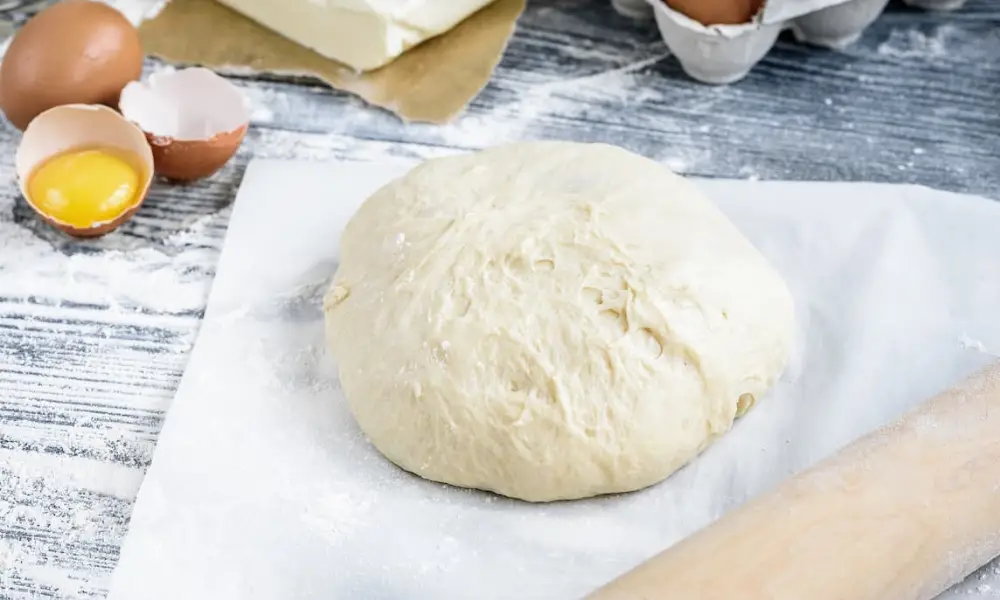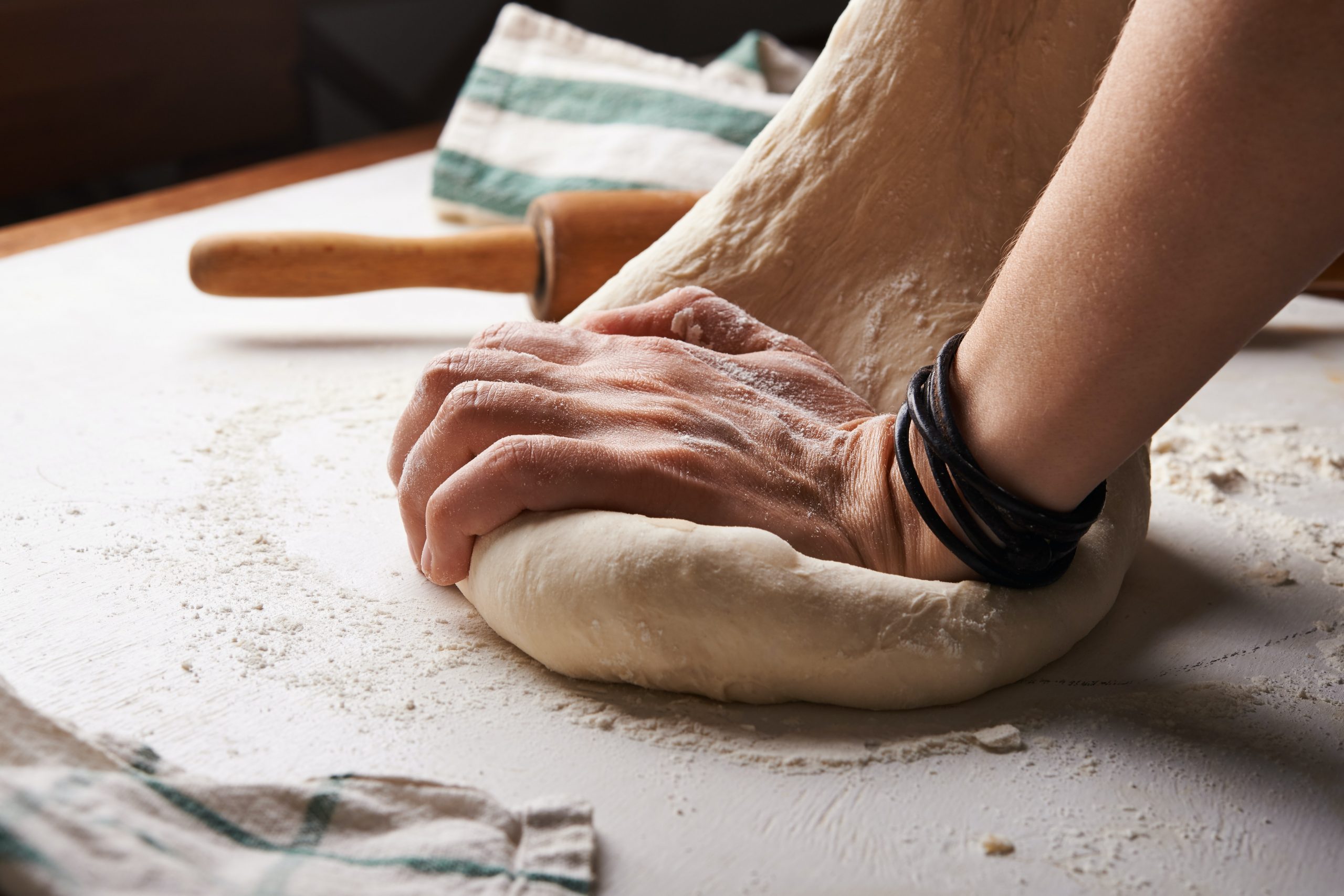Making food ahead of time is usually good because it makes mealtimes quicker and simpler. Pizza is one of those things that is best enjoyed just out of the oven. How can you make pizza ahead of time that tastes incredibly fresh? Just prepare the dough ahead of time! Except if you’re baking pizza without dough, you need it before.

Pizza dough can be preserved in a few ways to keep it tasty and fresh. If you store your pizza dough properly, you can assemble a pizza and bake it whenever you want!
Pizza Dough: What is it?
Pizza chefs spread out a thin pizza dough made of leavened wheat and shape it into a disc or rectangle. Toppings like tomatoes, cheese, meats, and veggies can be added to the dough before baking at a high temperature, and the dough transforms into a chewy, crispy pizza crust when baked.
How to Store Pizza Dough?
Storing Pizza Dough to Keep it Fresh
- Pizza dough should be kept in the refrigerator or freezer, regardless of your recipe. The natural fermentation process of the yeast is slowed down by cooling pizza dough, which maintains its viability. The yeast will ultimately eat the dough’s sugar if the dough is kept out at room temperature for an extended period, preventing your pizza from rising correctly.
- Pizza dough should be prepared and given time to rest. Let the dough ferment all night in a big, airtight container or a bowl covered with plastic wrap. Make individual pizza dough balls after the initial dough rise is finished. Whether you intend to make a personal pizza or an extra-large pie, each dough ball should be the same size as the serving size.
- Prepare your pizzas for the refrigerator. A prolonged room temperature exposure might cause the dough’s surface to dry out. Apply olive oil equally to the dough.
- Store your pizzas in wrappers. Pizza dough can be kept in the refrigerator in a variety of ways. The dough can be placed in a bowl and the top covered with plastic wrap, the entire dough can be wrapped in plastic wrap, or the dough can be put in a sealed plastic bag or another airtight container. Before baking your pizza, take it out of the fridge and let it get to room temperature. It might take between twenty and thirty minutes.
When to Store Pizza Dough?
The pizza dough should be stored using your favorite method after being mixed and given one rise. The dough should be divided and stored as desired (keep reading to learn how to store pizza dough properly!).
The dough needs to warm up and rise one more time before making your pizza, which is far quicker and easier than creating pizza dough from scratch every time.
What are Different Techniques of Freezing Pizza Dough?
It is pretty similar to this procedure to freeze pizza dough. After performing steps one and two from the process above, carry out the following:
Make your frozen pizza dough as soon as possible. On a parchment-lined sheet pan, arrange the greased dough balls in a single layer and freeze for about three hours.
Pizza dough should be sealed in a plastic bag, and the frozen dough balls should be taken from the baking sheet and put into a plastic bag. Seal the bag tightly after removing as much air as you can. You can keep the fresh dough and reduce freezer burn with proper storage.
Dough for pizza can be frozen for up to three months. For optimal results, use frozen pizza dough within 90 days of freezing. When the dough is prepared, defrost it overnight in the refrigerator in its container before letting it come to room temperature and using it to make pizza.
How to Make Pizza Dough at Home?
Making pizza dough is relatively simple. You can make the ideal, restaurant-quality dough in just a few easy steps, and it will make the perfect base for any pizza (even ones without sauce!).
To start, water and active yeast are combined and allowed to settle for a few minutes to activate the yeast. The dough is then combined once the remaining components (often flour, salt, sugar, and olive oil) have been added (make sure not to over-knead).
The pizza dough needs to rest after you’ve produced a smooth dough and kneaded it following your recipe’s instructions.
The yeast will start to grow and produce gases, causing the dough to rise (see why this is so important). This creates a beautiful fluffy bread crust or any fluffy crust for a pizza.
You will punch the dough down after it has risen, deflating it and forming it into your pizza crust. While some recipes specify that the dough must rise once more before baking, others state that the pizza dough only needs to increase once.
Who in the World Consumes the Most Pizza?
Even though it is well known that pizza originated in Italy, this country does not top the world in pizza consumption. To get to the little nation of Norway, we must go considerably further up Northwestern Europe. Surprisingly, this country tops the list of nations with the most annual pizza consumption.
Norway
On a per-person basis, Norwegians devour the most pizza worldwide. Every year, the 5.5 million people in this little country consume around 5 kg (11 lbs) of pizza.
You’ll notice pizzerias on practically every corner if you ever visit Norway. Additionally, Norwegians eat a lot of frozen pizza baked in the oven at home.
USA
In the United States, where there are more than 327 million people, 350 slices of pizza are consumed every second. Despite this, Americans don’t consume enough pizza to surpass Norway’s top spot. This nation, credited with inventing fast food, must accept second place. According to reports, Dominos sold an astounding $8 billion worth of pizzas in the United States alone in 2020 from their menu, which offers a variety of reasonably priced pizzas.
United Kingdom
Pizza is a popular food in the UK, where more than half of the population eats it at least once every ten days. It’s astounding how much pizza there is in a country with more than 66 million people.
Germany
The fourth-place nation is Germany, where 100 slices of pizza are consumed every second. With 82 million people living there, there aren’t enough pizzas to merit a podium slot.
Name Different Types of Pizzas Eaten in the World?
Neapolitan Pizza
The first pizza was made in Neapolitan. This delectable pie has a long history, beginning in Naples, Italy, in the 18th century. The less fortunate residents of this seaside community commonly bought cheap, easily consumable food during this time. For their benefit, Neapolitan pizza was inexpensive and easily accessible from various street sellers.
Chicago Pizza
Chicago pizza, also known as deep-dish pizza, takes its name from the city where it was first created. In the early 1900s, Italian immigrants in Chicago were looking for a dish comparable to the Neapolitan pizza they were familiar with and adored. Ike Sewell had another idea in mind when emulating the infamously thin pie. Slices of mozzarella lined the dough before being followed by meat and veggies and finally topped with a can of crushed tomatoes. The pizza had a thick crust with rising borders that resembled a pie. Sewell’s groundbreaking invention inspired him to establish the now-famous franchise restaurant Pizzeria Uno.
New York Style Pizza
One of America’s most well-known regional pizza varieties is New York-style pizza, distinguished by its broad, foldable pieces and crispy outer crust. The New York slice, which started as a Neapolitan-style pizza variation, has gained fame, with some theorizing that its distinct flavor is due to the minerals found in New York’s tap water.
Does Pizza Dough Go Bad?
Pizza dough can’t be stored for very long before going bad. The issue is that, especially when you keep it in the refrigerator, there are no overt indications that something has happened.
When attempting to cook a pizza with more than a week-old dough, you will notice something is off. Your dough won’t rise during baking since the yeast uses its resources over time.
One more issue is keeping pizza dough in the fridge for more than five days. After that time, bacteria will proliferate excessively, and things will worsen, primarily if you use dough made with milk or eggs. The procedure will go much quicker if you allow the dough to sit at room temperature for a few hours.
What are the Six Ways to Identify Bad Pizza Dough?
Always look for the expiration date on the pizza dough box and keep it properly. You risk receiving ruined goods that you shouldn’t consume.
Smell
Checking the dough’s scent is one of the most common ways to tell if it has gone wrong. The fermentation process might cause it to smell sour or to develop an alcohol or beer aroma. You already know that adding yeast to the dough will enable rising.
The anaerobe chemical reaction results in the breakdown of glucose and the creation of air bubbles in the dough by carbon dioxide. On the other hand, alcohol generated will alter the flavor and aroma of the dough, and the sourdough will lose its flavor if the procedure goes on for too long.
Additionally, the overgrown dough won’t taste nice due to the rapid bacterial development. Remember that fermentation will occur more quickly at hot temperatures; storing it in the freezer will prolong its shelf life.
This dough should not be consumed since it may result in unpleasant health problems, possibly even poisoning.
Your pizza dough may occasionally smell yeasty. Although the stench is a product of pre-fermentation, that doesn’t indicate the food is terrible.
Color
The hue of fresh pizza dough is cream or beige. Grey with a flaky or orange peel-covered surface is an unattractive color and indicates it’s time to discard this item.
After some time, the color changes as a result of phenolic and fatty acid oxidation being catalyzed by an enzyme. Since these substances are derived from flour, you should anticipate that eventually, this will occur.
Texture
Over time, it’s normal for pizza dough to lose its flexibility and become dry, flaky, and crusty. A product like that is challenging to roll into a ball or form into a pizza base.
Taste testing is the last stage before baking the pizza. It’s time to stop using this product as soon as you realize how bad it tastes.
Frost Burns
Pizza dough that has been improperly wrapped will eventually develop freezer burns, visible freezer crystals, or whitish areas if kept in the freezer for a prolonged period. Although this product is edible, you should try to avoid eating it due to its awful flavor.
Mold
Any mold growth is a warning sign that the pizza dough needs to be thrown out immediately. Since the product has already been contaminated by spores that have traveled throughout it, it is inappropriate to use the remaining dough after removing the mold.
Conclusion
You can store your dough for a few days before using it, and this method is similar to keeping it in the fridge. To freeze it, separate the dough into portions and place it in an airtight container. Ziplock bags are ideal because they form the shape of dough balls and take up little freezer space. Thawing the dough is straightforward; leave it on your worktop for three to four hours. The protection of the bag will keep it protected until you need it.
